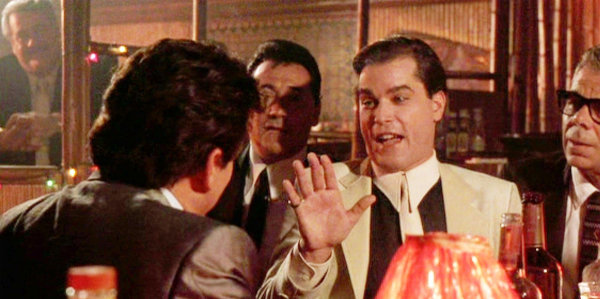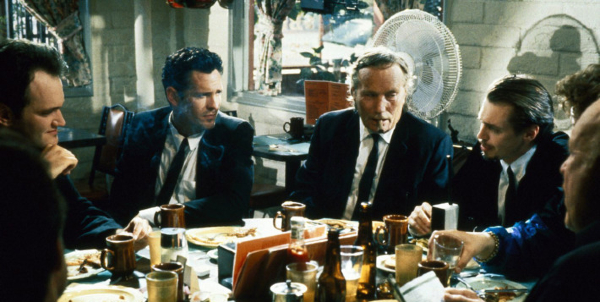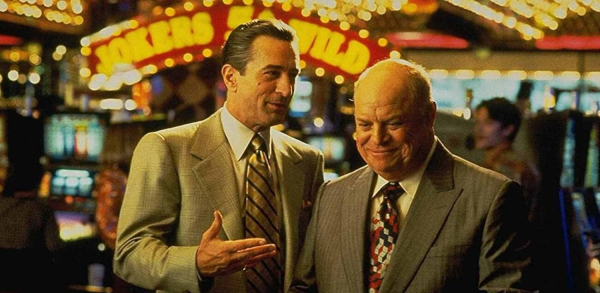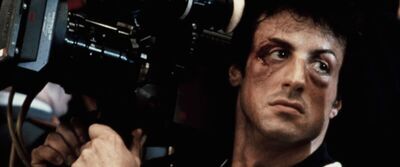Thirty Years On: The Legacy of GOODFELLAS
When Goodfellas was released in the United States midway through September 1990, it became an instant classic. Thirty years on, it is impossible not to notice not only the huge success of the film but the massive influence it has had on other films within the gangster movie genre.
Decade Defining Success for Scorsese
Upon release, it was clear that Scorsese had struck gold once again with Goodfellas. The film was adored by audiences and critics alike. Scoring forty-six million dollars at the domestic box office, the film was nominated for six academy awards, winning one.
This success was a big moment in the career of Martin Scorsese, who’s last mega-hit came a decade earlier with Raging Bull. The three full feature films he directed in the interim had been critically praised, and well respected, but with Goodfellas, Scorsese once again experienced wide-spread applause from the entire movie-going public.
The iconic New York director went on to have one of the most successful decades of his filmmaking career, following Goodfellas up with Cape Fear (1991), The Age of Innocence (1993), Casino (1995), and Kundun (1997). He ended the decade with eighteen academy award nominations.
While the immediate success of Goodfellas was clear to see, the influence that Scorsese’s gangster epic has had on other films within the genre is what has sustained its legacy. Often referred to as one of the most important films of the nineties, Goodfellas spawned a whole new era of crime cinema in Hollywood.
Criminal Chat
One of the more obvious ways in which the style of Goodfellas has been innovative is its use of dialogue. The high-speed, banter-filled conversations between gangsters make for some enjoyable and humorous moments. This can be seen throughout the film, with memorable sequences including funny exchanges of wit between the main characters.
An innovative feature of Goodfellas, Scorsese’s use of dialogue-heavy scenes creates some memorable character moments which play on the audience’s expectations and work to build tension through off-beat humour. A perfect example of this is the ‘funny guy’ scene, in which Joe Pesci’s character (Tommy DeVito) is joking around. He then becomes very serious when asking Henry Hill (Ray Liotta’s character) why he said that he is a funny guy. The scene quickly shifts the mood, as the banter between the two is replaced by tension and awkwardness. This reveals a lot about both characters, when Tommy reveals that he is still joking, bringing the tense atmosphere back into laughter.

With Tommy, this shows the audience that he is an unpredictable character. All of the members of the table fall for the joke, and believe that he is truly offended by what Henry just said. This kind of behaviour presents him as a character who likes to control these kinds of social situations. He enjoys that he is able to make people feel on edge, and uses mind games like that to unsettle. On the other hand, Henry’s reaction shows that he is uneasy within this situation. He is not as assured within this gangster setting as Tommy is. This becomes clear when we see the sense of relief on his face after Tommy is revealed to be messing around.
This highlights the way in which Scorsese used humour and dialogue heavy scenes as a way of revealing important character points to the audience. He makes great use of the tremendous performances of Joe Pesci and Ray Liotta, in order to represent the gangster atmosphere in an innovative way, replacing straight-faced, tough guy talk for a tense and unsettled off-beat humour.
Once again this represents the way in which Goodfellas contained particularly influential features. One of the most high-profile films that this style can be found in is Quentin Tarantino’s directorial debut, Reservoir Dogs. Many people suggest that the crime film genre was completely changed by Scorsese’s 1990 film, and Reservoir Dogs is believed to be one of the clearest examples of this.

The opening scene works along with the same principles as Goodfellas in terms of the conversation between criminals. We learn a great deal about each of the characters when we hear them give their opinions on music, tips, and jobs. Once again, this is not a set of tough gangsters battling for alpha status, but more a quick exchange of witty responses, as each character tries to make the others look stupid. This style certainly seems inspired by Goodfellas, and many other gangster films in the 1990s took a similar approach, as Scorsese’s gangster talk legacy lived on.
Gangster Revival
Goodfellas was also an important film because it was crucial in reviving the gangster genre, and not only just on the big screen.
The concept of the gangster movie as a Hollywood staple genre can be traced back to the 1930s, with films such as Scarface (Hawks, 1932), The Public Enemy (Wellman, 1931), and Little Caesar (LeRoy, 1931) soaring into critical acclaim, and are all now considered innovative classics. However, the gangster movie then fell into a much quieter period.
This changed upon the birth of New Hollywood, however. Gangster crime films came back into the Hollywood mainstream, with films like Bonnie and Clyde (Penn, 1967) and The Godfather films by Francis Ford Coppola (1972, 1974) grabbing the attention of the movie-going public. Despite this, once more the gangster film fell out of favour (as many genres do in Hollywood cinema). With the exception of Brian De Palma’s 1983 Scarface remake, the gangster film was moved out of blockbuster contention after its 1970s renaissance.
Goodfellas can certainly be considered the film which changed this trend. Performing very well at the box office and highly praised by critics, Scorsese’s film reinvigorated the Gangster genre once more. 1990s films like Carlito’s Way (De Palma, 1993) and Donnie Brasco (Newell, 1997) emerged, making use of a renewed interest in gangster movies that Goodfellas created. Scorsese even joined in with this himself, collaborating with both Pesci and De Niro again for Casino in 1995.

However, this rise in popularity for the gangster story was not limited to cinema. In 1999, The Sopranos, created by David Chase, first appeared on TV screens. After six seasons and eighty-six episodes, the show would be considered one of the best in the history of television. Many view The Sopranos as a large contributor towards the box-set culture which transformed TV into what we know it as today.
It is not just its genre which The Sopranos shares with Goodfellas. The two releases shared twenty-eight different performers, creating a strong link between The Sopranos and Goodfellas. In addition, its main character, a flawed Italian-American mobster looking to change his lifestyle, could be considered heavily influenced by the characters in Scorsese’s 1990 epic. Much like Tommy DeVito or Jimmy Conway, Tony Soprano is a morally ambiguous protagonist. He is not a character that audiences find it easy to like, but empathy is eventually created. This concept of the morally bankrupt mobster as a protagonist has its roots in Scorsese’s cinema and is another way in which Goodfellas’ legacy lived on through other gangster films and TV shows.
Scorsese’s Innovative Techniques
Another interesting feature for which Goodfellas is remembered is Scorsese’s use of unconventional editing techniques. One of the more obvious examples of this is through the use of freeze frames within the film. This is something that is rarely seen in mainstream, Hollywood films. Scorsese was hugely influenced by French New Wave filmmaking, and this is clear evidence of the inspiration that the 1950s European film movement had on his work.
A famous example of freeze-frame editing can be found at the end of François Truffaut’s The 400 Blows (1959), and this is clearly something that inspired Scorsese. The freeze-frame as an ending shot gives the film’s resolution a sense of ambiguity. The plot of the film ends abruptly to a single shot, literally bringing the events to a pause.
Before Goodfellas, this kind of unconventional editing style would’ve been much less popular within mainstream cinema. However, after Scorsese used freeze frames in Goodfellas, it became much more prevalent in Hollywood filmmaking. Thelma and Louise (Scott, 1991) ends (much like The 400 Blows) with a freeze-frame, as the feature managed to break its way into mainstream to a larger extent.
Summary
Overall, the way in which Goodfellas used witty gangster dialogue, innovative editing technique, and creative genre features makes the film a timeless classic of 1990s Hollywood cinema. Its legacy can be found throughout mainstream crime genre filmmaking. Goodfellas cements Scorsese as one of the most innovative American filmmakers of all time. After thirty years, Goodfellas still holds the status of a Hollywood classic.
What is your favourite part of Goodfellas? Let us know in the comments below!
Watch Goodfellas
Does content like this matter to you?
Become a Member and support film journalism. Unlock access to all of Film Inquiry`s great articles. Join a community of like-minded readers who are passionate about cinema – get access to our private members Network, give back to independent filmmakers, and more.
Join now!





